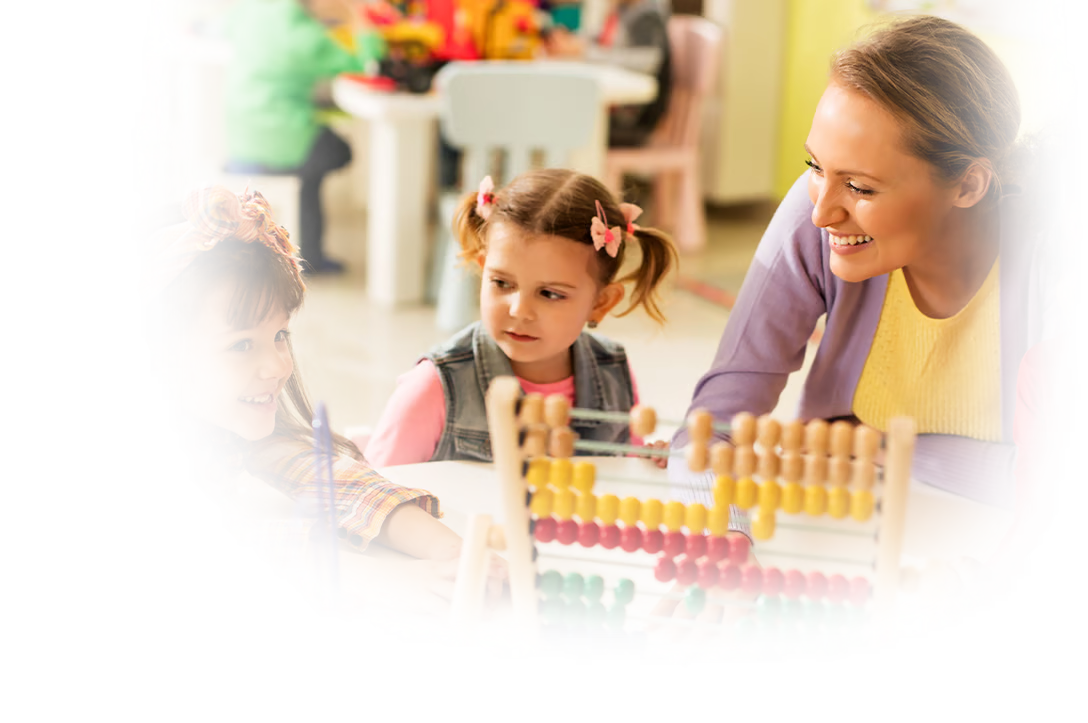
The Power of Positive Reinforcement for Children
In today’s fast-paced world, fostering positive mindsets in children is essential for their overall well-being and success. This blog post explores the importance of mindset in children’s development and introduces the concept of positive reinforcement as a powerful tool for shaping healthy mindsets. By understanding the principles of positive reinforcement and its impact on children’s self-esteem, emotional well-being, and growth mindset, parents, caregivers, and educators can create a supportive environment that nurtures healthy mindset development in children. Through practical tips and examples, this post provides actionable strategies for incorporating positive reinforcement into everyday interactions with children, promoting their confidence, resilience, and lifelong learning.
Understanding Positive Reinforcement:
Positive reinforcement is a foundational concept in child development that involves the use of praise, rewards, or encouragement to reinforce desired behaviours or actions. Unlike punishment, which focuses on discouraging unwanted behaviours through negative consequences, positive reinforcement emphasizes promoting and encouraging positive behaviours by providing positive outcomes or rewards.
a. What is Positive Reinforcement? Positive reinforcement involves identifying and acknowledging specific behaviours or actions that are desirable or aligned with desired outcomes. It can take various forms, including verbal praise, tangible rewards, privileges, or tokens.
b. How Does Positive Reinforcement Work? Positive reinforcement works by associating desired behaviours with positive outcomes or rewards, which increases the likelihood of those behaviours being repeated in the future. When children receive praise or rewards for demonstrating desired behaviours, they learn to associate those behaviours with positive outcomes, which reinforces their motivation to continue behaving in that manner.
c. Why is Positive Reinforcement Effective? Positive reinforcement is effective because it taps into intrinsic motivators, such as the desire for approval, recognition, or rewards. By providing positive feedback and rewards for desired behaviours, children develop a sense of competence, autonomy, and self-efficacy, which boosts their confidence and motivation to engage in similar behaviours in the future.
d. Examples of Positive Reinforcement:
-
- Verbal praise: Offering specific and sincere praise for desired behaviours, such as “Great job sharing your toys with your friend!”
- Tangible rewards: Providing tokens, stickers, or small prizes as rewards for completing tasks or demonstrating positive behaviours.
- Privileges: Granting privileges or special activities as rewards for following rules or meeting expectations, such as extra playtime or choosing a favourite activity.
e. The Role of Consistency: Consistency is key to the effectiveness of positive reinforcement. It’s essential to consistently reinforce desired behaviours with praise or rewards to reinforce their association with positive outcomes and encourage their repetition over time. Inconsistency or sporadic reinforcement may weaken the association between behaviours and rewards, leading to inconsistent results.
By understanding the principles of positive reinforcement and incorporating them into interactions with children, parents, caregivers, and educators can effectively promote desired behaviours, cultivate positive mindsets, and support healthy development.
Research in developmental psychology has indeed shown that praising children for their effort and the strategies they use, rather than for innate traits like intelligence, can have several benefits for their motivation, resilience, and overall development.
When children are praised for their efforts and strategies, it sends the message that success is within their control and is attainable through hard work and perseverance. This promotes a growth mindset, where children believe that their abilities can be developed through effort and practice, rather than being fixed or innate. In contrast, praising children for being “smart” or inherently talented may inadvertently reinforce a fixed mindset, where children believe that their abilities are predetermined and beyond their control.
Furthermore, praising children for their efforts, even if they fail at a task, helps to foster resilience and a willingness to take on challenges. It encourages children to see setbacks and failures as opportunities for learning and growth, rather than as indications of their inherent worth or abilities.
Overall, research suggests that praising children for their efforts, strategies, and perseverance is more conducive to fostering motivation, resilience, and a growth mindset, which are important qualities for success and well-being in the long term.
Building Self-Esteem:
Self-esteem refers to the overall sense of worth, value, and confidence that individuals have in themselves. It plays a significant role in shaping children’s attitudes towards themselves, their abilities, and their place in the world. Building and nurturing self-esteem in children is essential for promoting healthy emotional development and positive self-concept.
a. Importance of Self-Esteem:
-
- Self-esteem serves as a foundation for healthy development, influencing how children perceive themselves, their capabilities, and their worthiness.
- Children with high self-esteem are more likely to exhibit resilience, confidence, and a positive outlook on life, enabling them to navigate challenges and setbacks more effectively.
b. Role of Positive Reinforcement: Positive reinforcement plays a crucial role in building self-esteem by providing children with affirmations of their worth, competence, and value. When children receive praise and recognition for their efforts, accomplishments, and positive qualities, it reinforces their sense of self-worth and confidence.
c. Encouraging Positive Self-Image:
-
- Provide specific and genuine praise: Instead of generic praise, offer specific and sincere compliments that acknowledge children’s efforts, achievements, and positive attributes. For example, “I’m proud of how hard you worked on that project” or “You showed great kindness and empathy towards your friend.”
- Focus on strengths and efforts: Encourage children to recognize and celebrate their strengths, talents, and efforts, rather than fixating on perceived weaknesses or limitations. Help them understand that everyone has unique abilities and areas for growth.
- Foster a growth mindset: Emphasize the importance of effort, perseverance, and learning from mistakes. Encourage children to view challenges as opportunities for growth and development, rather than as reflections of their abilities or worth.
- Encourage self-expression: Provide opportunities for children to express themselves creatively, explore their interests, and pursue activities that bring them joy and fulfilment. Support their autonomy and encourage them to make choices and decisions that align with their interests and values.
d. Creating a Supportive Environment:
-
- Cultivate a nurturing and supportive environment where children feel valued, accepted, and respected for who they are.
- Foster open communication and active listening, allowing children to express their thoughts, feelings, and concerns without judgment.
- Model positive self-talk and self-compassion, demonstrating how to respond to challenges and setbacks with resilience, kindness, and optimism.
By implementing these strategies and creating a supportive environment that values effort, celebrates strengths, and encourages growth, parents, caregivers, and educators can play a critical role in building and nurturing children’s self-esteem.
Some Examples:
Let’s review some examples of positive and negative ways parents can influence their children’s growth and self-esteem:
Positive Examples:
-
-
Praising Effort: “I can see how hard you worked on that project! Even though it was challenging, you stuck with it and did your best. I’m really proud of you.”
-
This example reinforces the value of effort and perseverance, encouraging the child to take on challenges and persist in the face of obstacles.
-
-
Encouraging Independence: “You did a great job tying your shoes by yourself! It’s wonderful to see you learning how to do things on your own.”
-
By acknowledging and praising the child’s efforts to develop new skills and become more independent, this example fosters a sense of confidence and self-reliance.
-
-
Validating Feelings: “I understand that you’re feeling sad because your friend couldn’t come over today. It’s okay to feel disappointed. Let’s talk about how we can make the best of the situation.”
-
This example demonstrates empathy and validates the child’s emotions, while also encouraging problem-solving and resilience in the face of disappointment.
Negative Examples:
-
-
Comparison: “Why can’t you be more like your sister? She always gets good grades and never causes any trouble.”
-
Comparing children to others can undermine their self-esteem and create feelings of inadequacy or resentment. It’s essential to recognize and celebrate each child’s unique strengths and accomplishments.
-
-
Overprotection: “Don’t climb that tree; you might fall and hurt yourself. Let’s just stay inside where it’s safe.”
-
While it’s natural for parents to protect their children from harm, excessive overprotection can hinder children’s ability to develop confidence, resilience, and independence. Encouraging safe risk-taking and exploration is essential for growth and development.
-
-
Dismissal of Feelings: “Stop crying; it’s not a big deal. You’re making a fuss over nothing.”
-
Invalidating or dismissing children’s feelings can undermine their emotional well-being and lead to feelings of shame or suppression. It’s essential to validate and acknowledge children’s emotions, even if they seem trivial to adults.
By providing positive reinforcement, encouragement, and validation, parents can help foster a supportive environment that nurtures their children’s growth, self-esteem, and resilience. It’s important to be mindful of the language and behaviours used when interacting with children, as they can have a profound impact on their development and well-being.
Fostering a Growth Mindset:
Fostering a growth mindset is essential for children’s development as it empowers them to embrace challenges, persist in the face of setbacks, and view failures as opportunities for learning and growth.
A growth mindset is the belief that abilities and intelligence can be developed through effort, learning, and perseverance. Children with a growth mindset are more likely to approach challenges with resilience, view mistakes as opportunities for growth, and ultimately achieve greater success in academics, relationships, and life.
Embracing Challenges:
Encourage children to see challenges as opportunities for learning and growth rather than obstacles to be avoided. Help them understand that making mistakes and encountering setbacks are natural parts of the learning process.
Offer support and guidance as children navigate challenges, emphasizing the importance of effort, problem-solving, and persistence in overcoming obstacles.
Praising Effort and Progress:
Focus on praising children’s effort, progress, and strategies rather than solely on outcomes or achievements. By recognizing and celebrating their hard work and dedication, you reinforce the value of perseverance and continuous improvement.
Use specific and descriptive praise that acknowledges the steps taken and the strategies employed, such as “I noticed how you tried different approaches to solve that problem. That shows real perseverance and creativity!”
Cultivating Resilience:
Help children develop resilience by reframing failures and setbacks as opportunities for learning and growth. Encourage them to reflect on what they’ve learned from their experiences and how they can apply that knowledge in the future.
Model resilience by sharing your own experiences of overcoming challenges and setbacks. Demonstrate how you approach difficulties with a positive attitude, perseverance, and a willingness to learn from mistakes.
Encouraging a Love of Learning:
Foster a love of learning by creating a supportive and engaging learning environment at home and in school. Encourage curiosity, exploration, and experimentation, and provide opportunities for children to pursue their interests and passions.
Encourage children to set goals and pursue them with enthusiasm and determination. Help them break down larger goals into manageable steps and celebrate their progress along the way.
Promoting a Growth Mindset Culture:
Foster a growth mindset culture in your home or classroom by emphasizing the importance of effort, learning, and growth. Encourage collaboration, constructive feedback, and a willingness to take on challenges.
Create a safe and supportive environment where children feel comfortable taking risks, making mistakes, and asking for help. Celebrate perseverance, resilience, and the joy of learning.
By fostering a growth mindset in children, parents, caregivers, and educators can empower them to become lifelong learners, resilient problem-solvers, and confident individuals who are capable of achieving their goals and fulfilling their potential.
Promoting Emotional Well-Being:
Promoting emotional well-being is crucial for children’s overall development and resilience. Here’s an expanded discussion on this topic:
Promoting Emotional Well-Being:
Emotional well-being encompasses the ability to understand, express, and manage emotions effectively, as well as to cope with stress, build positive relationships, and maintain a sense of overall happiness and fulfilment. Nurturing emotional well-being in children is essential for their social, academic, and personal success, as well as for their long-term mental health and happiness.
Emotion Recognition and Expression:
-
- Encourage children to recognize and label their emotions accurately. Provide opportunities for them to express their feelings through verbal communication, art, writing, or play.
- Model healthy emotional expression by openly discussing your own feelings and reactions in age-appropriate ways. Demonstrate empathy and validation when children express their emotions, and encourage them to express themselves without fear of judgment or criticism.
Coping Strategies and Resilience:
-
- Teach children coping strategies and resilience-building techniques to help them manage stress, anxiety, and adversity effectively. These may include deep breathing exercises, mindfulness practices, positive self-talk, and problem-solving skills.
- Encourage children to develop healthy coping mechanisms and outlets for stress relief, such as engaging in physical activity, creative expression, spending time outdoors, or seeking support from trusted adults or friends.
Building Positive Relationships:
-
- Foster positive relationships and social connections by creating opportunities for children to interact with peers, family members, and other supportive adults. Encourage empathy, kindness, and cooperation in their interactions with others.
- Teach children effective communication skills, conflict-resolution strategies, and empathy-building exercises to help them develop and maintain healthy relationships. Model positive relationship behaviours and encourage open and honest communication in your interactions with them.
Self-Compassion and Self-Care:
-
- Promote self-compassion and self-care practices that prioritize mental, emotional, and physical well-being. Encourage children to practice self-care activities such as relaxation, hobbies, and self-soothing techniques.
- Help children cultivate a positive self-image and self-esteem by emphasizing their strengths, talents, and unique qualities. Encourage them to celebrate their achievements, however small, and to treat themselves with kindness and compassion.
Creating a Supportive Environment:
-
- Foster a supportive and nurturing environment at home, in school, and in the community where children feel safe, valued, and respected. Create routines, boundaries, and expectations that promote emotional well-being and provide stability and security.
- Offer opportunities for children to seek support and guidance from trusted adults, counsellors, or mental health professionals if needed. Ensure that they know they are not alone and that help is available whenever they need it.
By prioritizing emotional well-being and providing children with the tools, skills, and support they need to navigate their emotions effectively, parents, caregivers, and educators can help them develop resilience, build healthy relationships, and thrive in all aspects of their lives.
Creating a Supportive Environment:
Creating a supportive environment is essential for fostering children’s emotional well-being, promoting positive development, and nurturing their overall growth and resilience. Here’s an expanded discussion on this topic:
A supportive environment provides children with the safety, stability, and resources they need to thrive emotionally, socially, and academically. It encompasses physical, emotional, and relational aspects that contribute to children’s sense of security, belonging, and well-being.
Physical Environment:
-
- Ensure that the physical environment is safe, clean, and conducive to learning and play. Provide age-appropriate materials, toys, and equipment that stimulate creativity, exploration, and physical activity.
- Create designated spaces for various activities, such as quiet areas for reading or reflection, active areas for play and movement, and comfortable areas for relaxation and socialization.
Emotional Environment:
-
- Foster a climate of acceptance, respect, and empathy where children feel valued, understood, and supported. Encourage open communication, active listening, and validation of children’s thoughts, feelings, and experiences.
- Establish clear expectations, boundaries, and routines that provide structure and predictability while allowing for flexibility and autonomy. Create opportunities for children to contribute to decision-making and problem-solving, fostering a sense of ownership and responsibility.
Relational Environment:
-
- Cultivate positive relationships and connections among children, caregivers, educators, and peers. Encourage collaboration, cooperation, and teamwork, and model respectful and caring interactions.
- Provide opportunities for meaningful connections and social engagement, such as group activities, cooperative projects, and community service initiatives. Foster a sense of belonging and inclusivity where all children feel welcomed and valued.
Supportive Adults:
-
- Ensure that adults in the environment, including parents, caregivers, educators, and mentors, are responsive, nurturing, and supportive of children’s needs and aspirations. Build trusting and supportive relationships based on mutual respect, understanding, and empathy.
- Offer guidance, encouragement, and mentorship to children as they navigate challenges, setbacks, and transitions. Provide emotional support, validation, and reassurance during times of stress or uncertainty.
Collaborative Partnerships:
-
- Foster collaborative partnerships among parents, caregivers, educators, and community stakeholders to create a seamless support network for children. Share information, resources, and expertise to ensure that children’s needs are met holistically.
- Establish open lines of communication and regular opportunities for collaboration, feedback, and reflection. Work together to address challenges, celebrate successes, and continuously improve the supportive environment for children.
By prioritizing the creation of a supportive environment that addresses children’s physical, emotional, and relational needs, parents, caregivers, educators, and community members can help children feel safe, valued, and empowered to reach their full potential.


 Title
Title  Date
Date Category
Category